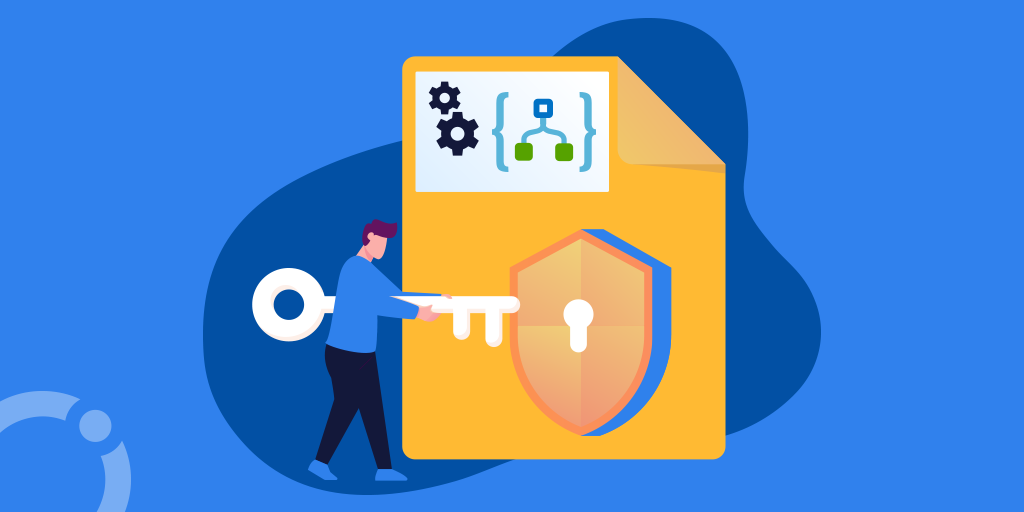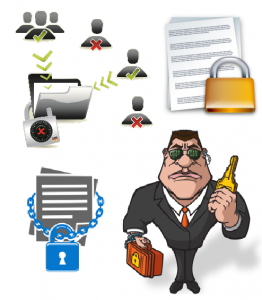How To Easily Encrypt Any File Or Folder?


In this blog, I will focus on the importance of using encryption software and how you can easily encrypt any file or folder. Nowadays, worrying about someone barging through your front door with a gun – trying to rob you of your personal belonging – is not the only concern one has. In this scientific age, existence has become more intricate than that – given the mounting information security concerns which haunt individuals as well as businesses – no one is protected. Today, your personal information/data is worth just as much as any valuable item(s) you may own – though data/information is easier to steal – thus, it is easier to correlate why there’s an increasing focus on stealing personal information.
Data encryption – practical solution to a critical matter
There’s not a single person out there – given the fact that this person uses a computer – does not have some sort of sensitive file or folder stored on his or her personal computer. However, what’s really concerning is the fact that 79 percent of these users have either ignored or are not aware that their sensitive files and folders are venerable to theft.
Information such as tax returns, customer lists, marketing ideas, HR related information, software code, financial spreadsheets, personal images and personal videos are some examples of the most sought after information by crooks.
Often, people feel as if they are immune to such threats, citing excuses such as: “I already take good care of my data; I don’t need to encrypt it” or “Who the hell would wants to steal my data, I am no one special.” The fact is, regardless of what your excuse is for not encrypting sensitive files and folders, if they are not encrypted – then they are not safe. To explain what could go wrong in practical situations, here are some interesting examples:
Loss or theft of laptop while travelling:
Imagine a busy marketing executive who has lots of marketing secrets saved on his or her laptop. This person often has to travel abroad in order to attend meetings and conferences. Despite how careful he or she is with their laptop, there will always be chances that this person might misplace their luggage on the aircraft, or perhaps their laptop may be stolen or be tampered with at the hotel they are staying at.
There are lots of crooks who specialize in such theft – mainly for the purpose of stealing personal or corporate data. Such larceny is usually executed by extracting company or personal data from laptops without even raising a whiff of suspicion – this is because the laptop itself is usually not stolen. In fact, there was recently a story in which various members of hotel staff in china were involved in corporate data theft. Consequently, the scam begins by inviting guests to an open bar in the hotel’s lounge. Enticed by the open bar offer – one wouldn’t think twice about bringing their laptop to the bar – so those involved in the scam already know that. Once, the guest arrives at the bar, the bartender texts his accomplice for the go ahead.
Without hesitance, a housekeeper enters the victim’s room and quickly gains access to the victims’ computer using a second laptop preloaded with hacking software. Access to victim’s computers can be gained in a matter of 1-2 minutes. Once windows password has been cracked, the housekeeper works his or her way to find files that may be useful. However, if the files are encrypted with encryption software,then it becomes impossible for them to steal data. Though, most of the time, personal and commercial data is usually found in an unencrypted state and the crooks manage to get away with it. In most cases, the victim may never realize the virtual larceny of his or her information. The stolen data is eventually sold to rival Chinese corporations, and personal data is sold on the internet black market – which is then used to conduct identity fraud.
Workplace data leaks:
Often is the case, when jealous co-workers may try to sabotage their co-worker’s career or perhaps to sell corporate information to competitors at others expense. Imagine an accounts officer named Jake who works on balance sheets and account statements. One day, Jake goes home early.
Not missing this golden chance, a coworker name Gus secretly logins into Jake’s computer with the help of an accomplice in the networking department (given the fact that networking engineers usually know the login password for all PCs at the workplace). Gus then forwards all confidential financial reports to a competitor, perhaps to gain financial incentive or to incapacitate Jake’s career – whatever the reason, the outcome is always the same.
Consequently, Jake’s employer eventually discovers this data leak after a thorough investigation and Jake ultimately gets fired – not the other way around. Had Jake secured all his financial spreadsheet with encryption software, the data couldn’t be extracted by even by the most expert hacker.
Campus data theft:
Imagine a scenario where a good student named Dave has finally prepared his 300 page thesis, and after several months of writing it, he completes it and just needs to submit it to his professor. Delectably, not knowing what diabolic plan his roommate, Steve has conjured up – Dave steps out with his girlfriend for a moment– leaving his computer on.
Not wasting a single moment, Steve makes some quick changes to Dave’s thesis and emails it to his professor. Not surprisingly, all the credit for Dave’s hard-work goes to Steve who stole Dave’s thesis – simply because Dave forgot to encrypt his thesis paper.
Encrypt All Files In A Folder
There are a few different ways to encrypt all files in a folder. The most popular methods are to use a third-party encryption program or to use the encryption features built into your operating system.
Using a third-party encryption program is the most secure option, as it will encrypt all files in the folder, including files that may have been added after the initial encryption. Popular encryption programs include AxCrypt, VeraCrypt, and 7-Zip.
Most Secure Way To Encrypt A File
The most secure way to encrypt a file is to use a full-disk encryption program. This type of encryption will encrypt the entire hard drive, including all files and folders. This ensures that all of the data on the hard drive is encrypted and secure.
Create An Encrypted Folder
Creating an encrypted folder is relatively easy. Most operating systems come with built-in encryption tools, such as Windows BitLocker or MacOS FileVault. Additionally, there are many third-party encryption programs available, such as TrueCrypt, VeraCrypt, and 7-Zip. To create an encrypted folder, simply select the folder you wish to encrypt, select the encryption method, and enter a password. Once the folder is encrypted, any files placed in the folder will also be encrypted
Is There Free Encryption?
Yes, there are many free encryption programs available, such as TrueCrypt, VeraCrypt, and 7-Zip. These programs allow you to encrypt your files and folders with a password, ensuring that only those with the password can access them.
The Simplest Encryption
AES (Advanced Encryption Standard) is the simplest encryption method. It is a symmetric encryption algorithm, meaning that the same key is used to both encrypt and decrypt the data. AES is used by many government organizations, as well as businesses, to protect sensitive data.
The Fastest File Encryption
The fastest file encryption method is AES-256. This encryption method uses an algorithm that is 256 bits in length and is considered to be one of the most secure encryption methods available. AES-256 is used by many government organizations, as well as businesses, to protect sensitive data.
Manually Encrypt A File
Manually encrypting a file involves using a file encryption program to encrypt the file with a key. The key is a password or passphrase that is used to both encrypt and decrypt the data. To manually encrypt a file, you will need to select the file you want to encrypt, choose the encryption algorithm you want to use (AES is the most commonly used), create a key, and then enter the key into the encryption program.
Create A Private Encryption Key
Creating a private encryption key involves generating a secure, random key that is used to both encrypt and decrypt data. This key is typically generated using a cryptographic algorithm and should be kept secure and private. To create a private encryption key, you will need to use a cryptographic library or tool such as OpenSSL or a password manager. Once the key is generated, it should be stored securely, as it is the only way to decrypt the data.
The Best Alternative To Bitlocker
The best alternative to BitLocker is VeraCrypt, a free and open-source disk encryption software. It is similar to BitLocker in that it provides full-disk encryption for Windows, Mac, and Linux operating systems. However, VeraCrypt offers additional features such as hidden volumes, and the ability to encrypt partitions or entire disks. It also has a strong focus on security, with multiple layers of encryption, key files, and a pre-boot authentication system.
Encrypt A Folder Without Bitlocker
You can encrypt a folder without BitLocker by using a third-party encryption tool such as AxCrypt, 7-Zip, or VeraCrypt. These tools can be used to protect sensitive data by encrypting the folder and its contents. All of these tools are free and easy to use, and provide strong encryption to protect your data.
Can Encryption Be Hacked?
Yes, encryption can be hacked. Encryption is a form of security that is designed to protect data from being accessed by unauthorized individuals, but it is not foolproof. If an attacker has the right knowledge and tools, they can potentially break an encryption algorithm and gain access to the data. Therefore, it is important to use strong encryption algorithms and keep encryption keys secure.
Encrypt A File Without Password
Yes, it is possible to encrypt a file without a password. This is done by using a public key encryption system, which does not require a password. In a public key encryption system, a user generates a public and private key pair. The public key is used to encrypt the file, and the private key is used to decrypt the file.
Summary:
Considering these sensible examples, chances are good, that you now have better awareness of how important it is to encrypt files and folders. Today, data theft is the fastest growing crime around the world because there are little or inadequate laws that offer protection for victims of e-crime. In the cyber jungle, you never know when you’ll be another target. Therefore, you need to be prepared for the worst case scenario by utilizing tools such as Folder Lock.
